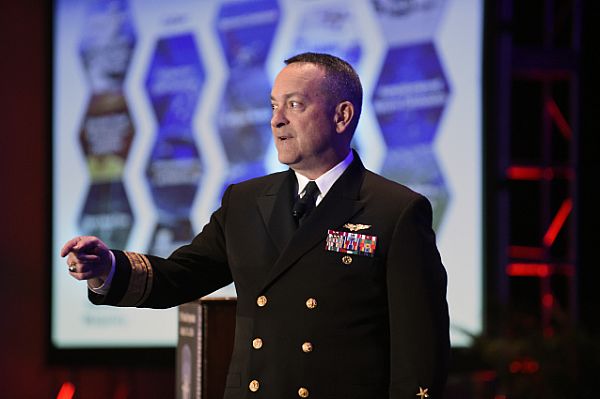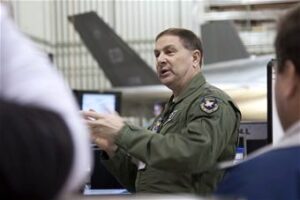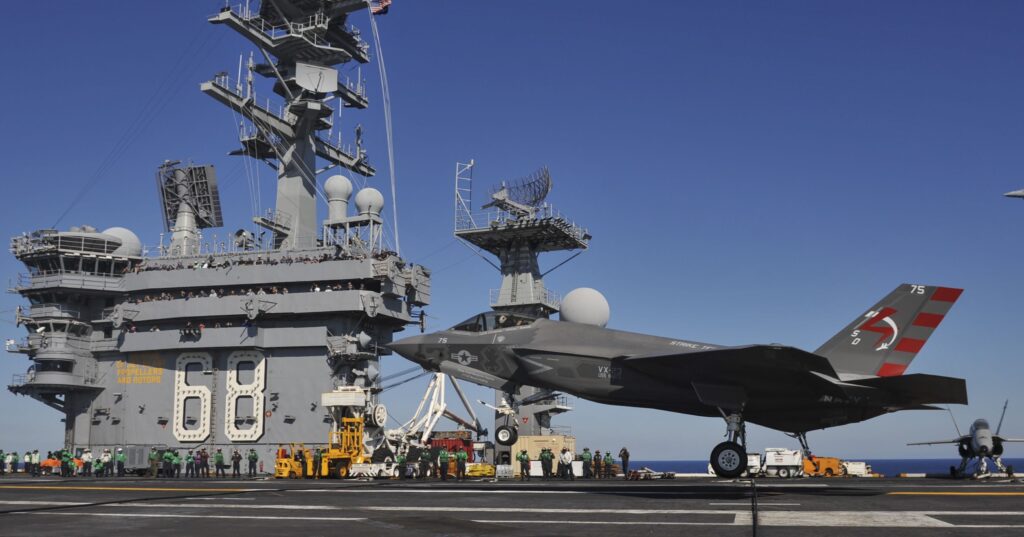
Rear Adm. Mat Winter
WASHINGTON: I vividly remember Chris Bogdan’s first public appearance as the effective head of the F-35 program.
It was at the Air Force Association’s annual September conference in 2012 and he said, very simply and quite passionately that the relationship between contractor Lockheed Martin and the Joint Program Office was “the worst I’ve ever seen.” He set the tone for his stewardship very quickly and simply, saying, “Here comes a little bit of straight talk.” But Lt. Gen. Bogdan is retiring, having helped right the listing JSF program (his predecessor, Adm. Venlet, helped a great deal) and built a modicum of trust among lawmakers (we know Sen. John McCain remains a careful skeptic) and redefined the government’s relationship with Lockheed. He led the program through IOC for both the Marines and the Air Force. Now he gets to go fishing for a little while.
His replacement, (almost) Vice. Adm. Mathias Winter, is not likely to come out swinging as Bogdan did.

Lt. Gen. Christopher Bogdan
“Adm. Winter is a safe choice to serve as PEO because he knows the program inside out and has all the necessary technical credentials,” says defense consultant Loren Thompson. “General Bogdan was the right leader for a time when the political system had not yet fully embraced the fighter, but now the main issue is securing enough funding each year to sustain production at economical rates.”
The most difficult issues Winter is likely to face in the short term (besides letting President Trump claim all the credit for lowering program costs) are the battle to keep up the numbers for the Navy purchase of the F-35C and the overall buy of the F-35 across all three services. The Air Force plans to buy 1,763 F-35As. The Marines plan to buy 353 F-35Bs and 67 F-35Cs. The Navy, which has been most cautious about committing to the F-35 even as it faces grave readiness problems with its F-18 fleet, plans to buy only 260 of the carrier variant.
Winter may help convince the Navy to buy the full tranche of F-35Cs, though I’m skeptical given how Adm. Venlet fared with the Navy during his tenure.

An F-35C catches the wire for the first time on USS Nimitz
“Having a naval aviator in the PEO’s position may help smooth the transition to F-35s on carrier decks. Although sea trials of the fighter’s carrier variant have gone extremely well, the Navy will be the last service to achieve initial operating capability, and there may still be some ambivalence about F-35 in the Super Hornet community,” Thompson argues. “The Navy must have F-35 to assure its effectiveness in future conflicts, and Adm. Winter can help sell that message.”
Winter, one of the Navy’s most experienced acquisition professionals, is steeped in the F-35 program and helped Bogdan prepare the data for the review of the costs and capabilities of the F-18 and the F-35 ordered by Defense Secretary Jim Mattis. We’ll watch him and the program as carefully as we can. And we wish him well in managing the biggest conventional defense program in the world.
Lockheed Martin projects potential $1 billion loss on classified program
Lockheed CFO Jay Malave said the company currently expects the program to become profitable on an annual basis around the 2028 timeframe.


























